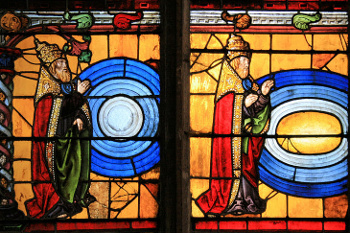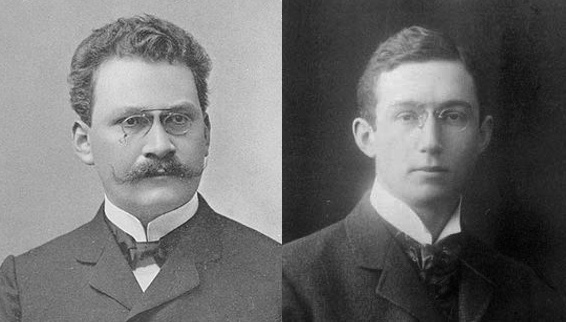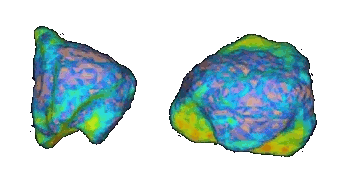
The Yarkovsky Effect
June 12, 2012 The momentum p of a body, as we all learned in our high school physics, is just the product of its mass m and its velocity v,p = mvArmed with this classical mechanics result, we are quick to conclude that photons, which carry no mass, should have zero momentum. This is all for the best, since if they had any mass at all, their high speed (the speed of light) would give them a lot of momentum. Well, classical mechanics is called classical for a reason. When we look at objects outside the limited realm of its postulates, our past wisdom is often not accurate. James Clerk Maxwell's electromagnetic theory shows that electromagnetic radiation, which is the wave complement of particulate photons, will exert a force on objects. Pyotr Lebedev confirmed this experimentally in 1899. Momentum is the integral effect of a force exerted over a time period.
 | An early conception of light having momentum. A stained glass rendering of the "Fiat Lux" scene of the Bible at the Church of St. Madeleine, Troyes, Aube, France. (Via Wikimedia Commons). |
p = h/λ (after de Broglie)where λ is the wavelength, h is Planck's Constant, c is the speed of light, and E is energy. According to Abraham,
E = hν = hc/λ (after Planck)
λ = hc/E
p = E/c
E = mc2 (after Einstein)
m = E/c2
p = mv = mc = E/c
 |
| Hermann Minkowski, left, and Max Abraham, right. (Source images. left, right, via Wikimedia Commons.) |
 | Radar maps of asteroid 6489 Golevka (NASA/JPL images, via Wikimedia Commons). |
References:
- Berian James, Letter to Nature (Friday, Jan 5 2007).
- Mark Buchanan, "Minkowski, Abraham and the photon momentum," Nature Physics, vol. 3, no. 2 (February, 2007), p. 73.
- H. Minkowski, Nachr. Ges. Wiss. Göttn. Math.-Phys. Kl.(1908), p. 53.
- M. Abraham, Rend. Circ. Matem. Palermo vol. 28 (1909), p. 1.
- Report to Congress: Near-Earth Object Survey and Deflection Analysis of Alternatives, National Aeronautics And Space Administration, March 2007.
- Final Report of the Ad Hoc Task Force on Planetary Defense, NASA Advisory Council, Dr. Tom Jones and Mr. Rusty Schweickart, Co-Chairs, October 6-7, 2010.
- NASA Scientists Use Radar to Detect Asteroid Force, JPL Press Release No. 2003-163, December 5, 2003
- Steven R. Chesley, Steven J. Ostro, David Vokrouhlický, David Capek, Jon D. Giorgini, Michael C. Nolan, Jean-Luc Margot, Alice A. Hine, Lance A. M. Benner and Alan B. Chamberlin, "Direct Detection of the Yarkovsky Effect by Radar Ranging to Asteroid 6489 Golevka," Science, vol. 302 no. 5651 (December 5, 2003), pp. 1739-1742.
- Nancy Neal-Jones and Daniel Stolte, "Asteroid Nudged by Sunlight: Most Precise Measurement of Yarkovsky Effect," NASA Press Release, May 24, 2012
- OSIRIS-REx Mission web site.